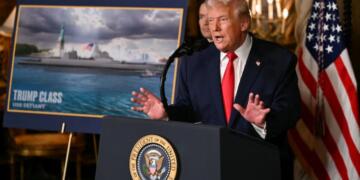Last week, the Maharashtra Education Board of India agreed on reducing the presence of Mughals in the history books for Class-7 and Class-9. Unlike earlier where the Mughals occupied a significant presence in the course curriculum, they have now been reduced to 3 lines. Starting from Babur to Bahadur Shah Zafar, all in 3 lines. Instead, greater importance is being given to Shivaji and his reign. Clearly, Shivaji’s presence is indispensable to the history of the Indian subcontinent, and that has enabled the Maharashtra Education Board is playing the geography card to justify their move.
Enough has been written about how the Indian school curriculum has always been under the heavy influence of leftists in India. Invaders and murderers are hailed as Great Kings, and the likes of Shivaji were always reduced to a ‘fun fact’ within the course book or made for a scoring 2-marks question in the final exams. The prolonged absence of Hindu History from the textbooks is attributed to the inability and failure of the kingdoms before the 10th century to leave any written records in the form of manuscripts, and alongside, the Mughal kings are hailed for having their biographies written, for that makes the core of Indian history for the leftist ecosystem in India.
Fortunately, I had a tryst with both ICSE and CBSE during my schooling years. Up to Class-8, I was enrolled under the ICSE board, and my final two years of secondary school were spent under the CBSE Board. Also, unlike CBSE, we began with History as a separate subject in Class-5 itself, which was another challenge. However, in retrospect, I can safely conclude that the Mughal history along with the subcontinental history during the British occupy a major portion of social sciences for students up to Class-10, irrespective of the boards they are enrolled in. The last 700-years of subcontinental history occupy 90% of the space against the preceding 3000-years.
As students in school, one does not have the choice to question their curriculum or whatever it teaches. Even if one wishes to understand why the Japanese attacked Pearl Harbor, or why Hitler wanted the Second World War, or what makes Akbar a great king even when he slaughtered innocent civilians in the siege of Chittorgarh, and this is why the Central and State Governments must step in.
Shivaji is and will always be integral to the social fabric of Maharashtra, just like the Ten Gurus are integral to the social fabric of Punjab, the Jats to Haryana’s, and so on. However, numerous icons of Indian history have seldom found the place they rightfully deserve in our curriculums. Make no mistake, one cannot take away the presence of 300-years from the Mughals or that of another 100-odd year from the Delhi Sultanate, but one must acknowledge that there is much more to the history of the Indian subcontinent than Mughals and Delhi Sultanate. Kingdoms like that of Vijayanagara are reduced to single paragraphs within school books, diverting all attention to the Mughal empire, their kings, the queens of their kings, the queens they traded for kingdoms, and in some cases, even what their mother-in-laws were up to.
Clearly, the entire social studies curriculum reeks of stagnation, but does that justify the move of Maharashtra education board to simply eliminate the history of the Mughals from the school books?
Apparently, not.
In their truest nature, Mughals were invaders and plunderers. One may sugarcoat their presence with the architecture they gave or the practices they introduced, but their reign must be remembered as that of invaders who were eventually invaded and annihilated by the British. Do we admire or adore the British for they gave us Railways, so why such unconditional love for the Mughals?
However, reducing them to 3-lines within the textbooks is going to suffice any purpose. If we want our kids to learn the history of the Indian subcontinent in the right manner, we must present them with the facts as they are, and leave it to them to form their opinions. Given we are witnessing the emergence of a generation that learns the fundamentals of WhatsApp and YouTube before doing basic Mathematics, leaving them to form their opinions is a recommended exercise, and this is what the Central and State Educational Boards and agencies must focus on.
This move from the Maharashtra Education boards acquaints students with selective information about the Mughals, which is evidently dangerous. Certainly, one cannot expect the Central and State board to accommodate every episode of subcontinent history in the textbooks for Class-6 to Class-10, and this is where the HRD ministry should fight its next battle.
The volume of the social studies curriculum has always been a problem for teachers and learners alike. One of the probable solutions to this problem could be in diversifying the syllabus after Class-8. Acquaint students with Ancient, Medieval, and Modern history in Classes-6, 7, and 8, and then leave it to them to opt for one part for their remaining 2-years. This will warrant some flexibility at the end of the schools and will require books to be re-written, but if certain permutations and combinations are worked out pertaining to the teaching staff, things might work. Examinations can have optional questions for students (much like in UPSC optional), thus streamlining the entire learning process. The idea is to acquaint students with a complete history of at least one period, as per their interest, instead of a superficial reading of the entire history.
As of now, history, as a subject, is fast losing its relevance in the Indian curriculum. Unless reinvented, the subject is going to die a slow painful death at the hands of teachers, students, and other experts who are doing to create interest in the subject.
The Maharashtra Education Board took a wrong step but in the right direction. Yes, the Mughals must be showcased for who they truly were, but not in this manner. Shivaji or Aurangzeb, the deeds of all relevant historical personalities must be left open to the students to interpret. If the governments continue to mingle with the curriculum according to their inclinations, the only ones to suffer would be students, and doing this, the Right won’t be any different from the Left.
Let all facts be in the open, and let’s leave the interpretation to the next generation of Smart Kids. Not too much to hope for, or is it?

































